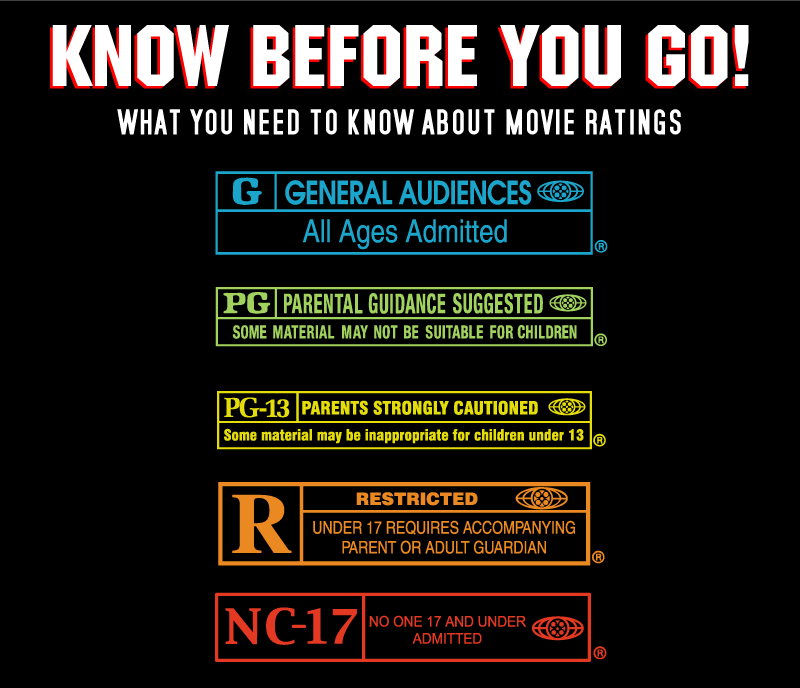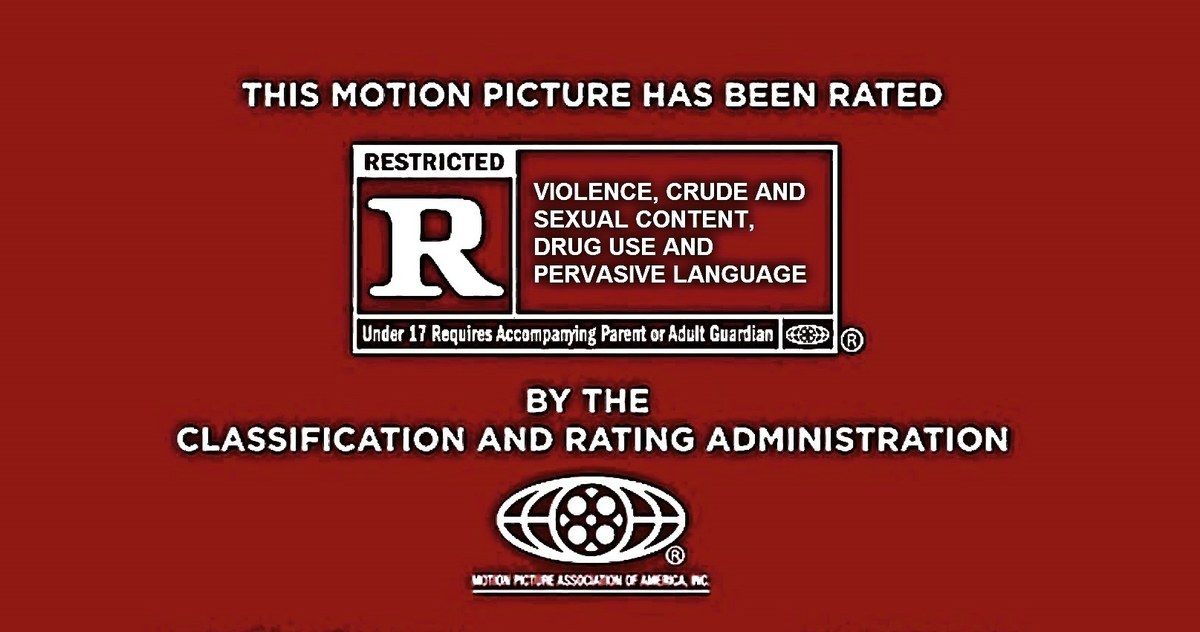Behind the Ratings: What Makes a Film 21+? This exploration delves into the multifaceted criteria used to assign an adults-only rating to films. We’ll examine the complex interplay of violence, sexual content, mature themes, and cultural contexts that determine a film’s suitability for a 21+ audience. Understanding these factors provides valuable insight into the filmmaking process and the evolving standards of mature content.
From graphic violence and explicit sexuality to nuanced portrayals of mature themes and the impact of special effects, we’ll dissect the elements that contribute to a film’s 21+ designation. We will also explore how cultural norms and regional differences influence rating decisions, leading to variations in how the same content is perceived across different countries and audiences. The analysis will also touch upon the roles of marketing, independent filmmaking, and audience reception in shaping the landscape of 21+ cinema.
Sexual Content and Nudity
The presence and depiction of sexual content and nudity in films rated 21+ are significant factors influencing their classification. The range of explicitness varies considerably, shaped by cultural norms, artistic intent, and the specific plot requirements. Understanding these variations requires examining both the type and context of the sexual content presented.
The level of explicitness in sexual content spans a wide spectrum. Some films may employ suggestive imagery and implied sexual activity, relying on innuendo and subtle visual cues to convey intimacy. Others may contain explicit depictions of sexual acts, including nudity and simulated intercourse. The context in which this content is presented significantly impacts its overall effect. A scene of passionate intimacy within a committed relationship might be perceived differently from a scene of exploitative or gratuitous sexual activity.
Camera Angles and Editing Techniques
Camera angles and editing techniques play a crucial role in shaping the audience’s perception of sexual content. Close-up shots can heighten intimacy and emotional intensity, while long shots can provide a broader context and potentially distance the viewer from the act. Rapid editing can create a sense of urgency or excitement, whereas slow, deliberate pacing can emphasize sensuality and vulnerability. The use of lighting, shadows, and other visual elements further contributes to the overall mood and impact of the scene. For instance, a dimly lit scene might suggest mystery and intrigue, whereas brightly lit scenes might feel more clinical or detached. The choices made by the filmmakers directly influence how the audience interprets the depicted sexuality.
Cultural Context and Sexual Themes
The portrayal of sexual themes in 21+ films varies significantly across different cultural contexts. What might be considered acceptable or even commonplace in one culture could be deemed offensive or inappropriate in another. For example, the depiction of nudity might be more readily accepted in some European films than in films produced in certain Asian or Middle Eastern countries. These differences reflect varying cultural attitudes towards sexuality, modesty, and the representation of the human body. Furthermore, the way consent and sexual relationships are portrayed can be highly influenced by cultural norms and societal expectations. A film exploring themes of sexual liberation in a Western context may differ substantially from a film addressing similar themes in a more conservative cultural setting.
Categorization of Sexual Content in 21+ Films
The following list categorizes the types of sexual content frequently encountered in 21+ films. It’s important to note that these categories are not mutually exclusive, and a single scene might encompass elements from multiple categories.
- Implied Sexual Activity: Suggestive gestures, dialogue, and visual cues that imply sexual activity without explicit depiction.
- Explicit Sexual Activity: Direct and unambiguous portrayal of sexual acts, including intercourse and other forms of physical intimacy.
- Nudity: The exposure of genitals or breasts, which can range from partial to full nudity.
- Non-Consensual Sexual Acts: Depictions of sexual acts without explicit consent, including rape and sexual assault. These scenes often serve to highlight the serious consequences of such actions and are typically handled with sensitivity and care.
- Sexual Violence: This encompasses a broader range of actions beyond non-consensual acts, including sexual coercion, exploitation, and degradation.
Mature Themes and Language
Mature themes and explicit language are defining characteristics of films rated 21+. These elements contribute significantly to the overall narrative, impacting the audience’s emotional response and understanding of the characters and their situations. The skillful or unskillful handling of these elements can greatly affect a film’s critical reception and lasting impact.
The inclusion of mature themes often serves to explore complex human experiences and moral ambiguities that are not suitable for younger audiences. These themes can include, but are not limited to, explorations of violence, drug use, suicide, mental illness, sexual assault, and the intricacies of complex relationships. The depiction of these topics requires sensitivity and a nuanced approach to avoid gratuitous exploitation or the trivialization of serious issues.
Mature Themes in Film
Films rated 21+ frequently delve into the darker aspects of human experience. For instance, the depiction of drug addiction in a film like “Requiem for a Dream” (2000) uses unflinching realism to portray the devastating physical and psychological effects of substance abuse. This contrasts with films that might sensationalize drug use without exploring its consequences meaningfully. Similarly, the portrayal of suicide, as seen in “Manchester by the Sea” (2016), can offer a sensitive and empathetic exploration of grief and loss, while a poorly handled depiction might inadvertently romanticize or glorify the act. Complex relationships, such as the tumultuous dynamic in “Marriage Story” (2019), can provide a realistic portrayal of the challenges and complexities of human connection. The effectiveness of these depictions relies heavily on the director’s ability to present these themes with nuance and avoid exploitative representations.
Language and Tone in 21+ Films
Profanity and mature language are frequently used in 21+ films to enhance realism, character development, and overall tone. The use of such language can reflect a character’s personality, social background, and emotional state. However, the effectiveness of this language hinges on its integration into the narrative. Overuse can become gratuitous and detract from the film’s impact, while judicious use can contribute to a sense of authenticity and emotional depth. For example, the gritty realism of a film like “The Wolf of Wall Street” (2013) is partly achieved through its frequent use of profanity, reflecting the characters’ brash and aggressive personalities. In contrast, a film that relies solely on profanity for shock value might come across as crass and ultimately ineffective.
Comparative Analysis of Language in 21+ Films
Let’s compare the language used in three diverse 21+ films: “Pulp Fiction” (1994), a crime drama; “American Beauty” (1999), a dark comedy-drama; and “Moonlight” (2016), a coming-of-age drama. “Pulp Fiction” utilizes a distinctive blend of colloquialisms, slang, and profanity, contributing to its stylized and darkly humorous tone. The language reflects the characters’ specific backgrounds and personalities. “American Beauty,” while containing profanity, uses it more sparingly, focusing instead on subtle, often darkly comedic dialogue that reveals the characters’ inner turmoil and disillusionment. “Moonlight,” in contrast, features a more restrained use of language, reflecting the quiet intensity of the narrative and the characters’ internal struggles. The differences in intensity and context of language usage highlight the diverse ways in which mature language can contribute to the overall effect of a film.
The Role of Context in Rating Decisions
The context surrounding a scene is crucial in determining its contribution to a film’s overall rating. A seemingly explicit scene might be rated differently depending on its narrative purpose, the way it’s presented, and the overall tone of the film. The rating system doesn’t simply assess individual scenes in isolation; rather, it considers their cumulative impact within the larger cinematic context.
The context of a scene significantly impacts its contribution to the overall rating. This includes the narrative purpose, the way the scene is presented visually and aurally, the overall tone and style of the film, and the target audience. A scene depicting violence, for instance, could be considered gratuitous and contribute to a higher rating if presented in a glorifying or exploitative manner. However, the same scene could receive a lower rating if it serves a crucial narrative function, such as depicting the consequences of war or highlighting the brutality of a specific event, and is presented in a way that emphasizes the suffering and negative consequences rather than glorifying the violence itself.
Directorial Intent and Artistic Choices Influence Ratings
A director’s artistic vision and intent heavily influence how a scene is perceived and, consequently, its impact on the rating. A filmmaker might employ specific techniques, such as stylized cinematography or a particular narrative structure, to contextualize potentially offensive material. For example, a scene containing nudity might be rated differently if it’s presented as an integral part of a character’s emotional journey within a serious drama, versus a scene that uses nudity for mere titillation within a comedy. The deliberate artistic choices made by the director—the framing, lighting, music, and editing—all contribute to the overall impact and the rating board’s assessment. A scene’s aesthetic presentation can significantly alter its interpretation.
Examples of Contextual Differences in Rating Decisions, Behind the Ratings: What Makes a Film 21+
Consider two films, both containing scenes of violence. In one film, the violence is gratuitous, prolonged, and presented in a way that glorifies the act. In the other, the violence is brief, realistic, and shown as a consequence of a character’s actions, highlighting the negative consequences of their choices. The first film would likely receive a higher rating due to the exploitative nature of the violence, while the second film might receive a lower rating because the violence serves a narrative purpose and is not presented for its own sake. Similarly, a scene of sexual content in a serious drama exploring themes of intimacy and vulnerability might receive a different rating than the same scene presented in a comedic or exploitative manner.
Target Audience and Acceptance of Mature Content
The intended audience significantly impacts how mature content is interpreted and accepted. A film aimed at a mature audience, for instance, might be given more leeway in depicting mature themes and content than a film targeting younger viewers. The expectations and sensitivities of the target audience are considered when assessing the appropriateness of the content. A scene might be considered acceptable within the context of a film aimed at adults but deemed inappropriate for a younger audience. This consideration reflects the understanding that different age groups have different levels of maturity and understanding of complex themes. For example, a film exploring complex themes of sexuality might be acceptable for an adult audience but deemed unsuitable for children.
Cultural and Regional Differences in Ratings: Behind The Ratings: What Makes A Film 21+

Film rating systems are not universally consistent. Cultural values, societal norms, and legal frameworks significantly impact how films are categorized and restricted for audiences in different parts of the world. Understanding these variations is crucial for appreciating the complexities of film distribution and consumption globally.
The influence of cultural norms on film ratings is profound. What might be considered acceptable content in one culture may be deemed offensive or inappropriate in another. This discrepancy often stems from differing perspectives on sexuality, violence, religious beliefs, and political sensitivities. Consequently, a film’s rating can vary drastically depending on the country or region where it is being reviewed.
Examples of Varying Film Ratings Across Countries
The differences in rating systems are clearly illustrated through comparing how various countries classify the same film. Consider the handling of scenes depicting violence, nudity, or mature themes. A film might receive a PG-13 rating in the United States, indicating that parental guidance is suggested for children under 13, while receiving a higher rating in another country, such as an 18 rating in the UK, restricting viewing to individuals 18 years or older. This discrepancy might be due to stricter standards regarding violence or mature themes in the UK’s rating system compared to the US system.
Comparative Table: Rating Discrepancies
The following table demonstrates the rating differences for a specific film across three countries, along with possible reasons for these discrepancies. Note that the film selected is hypothetical to protect against potential copyright issues and to provide a clearer illustration of the concept.
| Country | Rating | Reason for Rating |
|---|---|---|
| United States (MPAA) | R | Strong language, violence, and some sexual content. The MPAA considered the violence and language to be too intense for audiences under 17. |
| United Kingdom (BBFC) | 15 | Moderate violence and language. The BBFC deemed the film suitable for those 15 and over, finding the level of violence and sexual content less intense than the MPAA. |
| Germany (FSK) | 16 | Strong language and some disturbing scenes. The FSK, with its focus on potential harm to minors, found the film suitable only for those 16 and older, due to the film’s language and potentially disturbing content. |
The Impact of Special Effects and CGI
The increasing sophistication of special effects and computer-generated imagery (CGI) has profoundly altered the landscape of filmmaking, particularly impacting the depiction of violence, gore, and other mature themes that often lead to a 21+ rating. The realism achievable through these techniques influences not only the visual impact but also the emotional response of the viewer, directly affecting how a film is perceived by rating boards.
The level of realism achieved in special effects plays a crucial role in determining a film’s rating. Highly realistic depictions of violence, even if brief, can contribute significantly to a higher rating, while stylized or fantastical effects might be deemed less impactful. This difference stems from the way viewers process information; hyperrealistic gore might be more disturbing and upsetting than a stylized, less visceral representation of the same event. The context of the violence is also important, with gratuitous or prolonged depictions of realistic violence being more likely to result in a higher rating.
Realistic versus Stylized Special Effects and Rating Implications
The difference between realistic and stylized special effects is often the deciding factor in a film’s rating. A film employing hyperrealistic CGI to depict graphic violence, such as a detailed portrayal of a gunshot wound with blood splatter and tissue damage, is far more likely to receive a 21+ rating than a film using stylized, less realistic effects to convey the same event. For instance, a stylized depiction might show a bright flash of light and a character collapsing dramatically, minimizing the graphic details and thus lessening the impact on the viewer. The former emphasizes the brutality, while the latter focuses on the dramatic effect. Consider the difference between the realistic depiction of a fight scene in a war film versus a stylized, almost balletic fight scene in a fantasy film. The former could easily warrant a higher rating than the latter.
Examples of Films Where Special Effects Influence the 21+ Rating
Several films demonstrate how special effects contribute to a 21+ rating. For example, the *Saw* franchise frequently utilizes realistic CGI to depict graphic depictions of torture and gore, which are central to the films’ plots. The detail and realism of these effects directly contribute to the films’ high ratings. Similarly, certain zombie films, known for their visceral depictions of dismemberment and decay, rely heavily on CGI to create convincingly gruesome visuals, leading to a 21+ classification. In contrast, a film like *Sin City*, while depicting violence, uses a stylized, noir-inspired visual style that minimizes the graphic detail and thus impacts the rating.
Techniques for Creating Realistic Violence and Sexual Content
Modern filmmaking employs sophisticated techniques to create realistic-looking violence and sexual content. High-resolution CGI allows for detailed modeling of human anatomy and the creation of convincingly realistic wounds, blood effects, and bodily fluids. Advanced simulation software enables the realistic depiction of physical impacts, such as gunshots, explosions, and blunt force trauma. For sexual content, CGI can be used to subtly enhance or alter body shapes and movements, often in conjunction with careful lighting and camera angles to create a specific visual effect. However, it’s important to note that even with these advanced techniques, the overall context and presentation of the content remain crucial factors in determining the final rating. The intent and execution of the scene, not just the technical proficiency, heavily influence the rating decision.
The Influence of Marketing and Promotion
Marketing and promotion play a crucial role in shaping audience expectations and perceptions of a film, particularly regarding its mature content and resulting rating. The way a film is advertised can significantly influence whether potential viewers believe it aligns with their interests and tolerance for explicit material. This impact extends beyond simple awareness; it can directly affect box office success and critical reception.
Marketing materials, such as trailers and posters, act as the primary point of contact for potential viewers before they see the film itself. These materials are carefully crafted to generate interest and excitement, often highlighting specific aspects of the film while downplaying others. This selective showcasing can profoundly impact how audiences perceive the film’s overall tone and content. For instance, a trailer emphasizing action sequences might downplay the film’s sexual content, leading viewers to underestimate the extent of its mature themes. Conversely, a poster focusing on provocative imagery could overemphasize the sexual content, potentially alienating viewers who might otherwise enjoy the film.
Marketing Strategies and Ethical Implications
The ethical implications of marketing strategies that manipulate or misrepresent a film’s mature content are significant. Deceptive marketing practices can mislead audiences and damage the trust between filmmakers and viewers. Over-promising mature content to attract a specific demographic, only to deliver something less explicit, constitutes a form of false advertising. Conversely, downplaying mature content to broaden appeal might inadvertently lead to viewer disappointment or even offense. Responsible marketing requires a balance between generating interest and accurately representing the film’s content and rating. A transparent approach, while potentially limiting the reach of the marketing campaign, fosters greater trust and ultimately protects the integrity of the film.
Examples of Successful and Unsuccessful Marketing Campaigns
The marketing campaign for “The Wolf of Wall Street” (2013) successfully reflected the film’s R-rating by showcasing its hedonistic lifestyle and explicit content. The trailers were unapologetically raunchy, accurately depicting the film’s debauchery and establishing audience expectations accordingly. This honest approach resonated with viewers expecting a film with mature themes and attracted its target demographic. In contrast, the marketing for some films has fallen short. Certain campaigns have been criticized for downplaying or even concealing the level of violence or sexual content present in the final product, leading to negative reviews and disappointed audiences. For instance, while specific examples are difficult to cite without delving into subjective interpretation of marketing effectiveness, several films have faced criticism for marketing that didn’t accurately reflect the final product’s level of graphic violence or mature themes.
A Hypothetical Marketing Campaign for a 21+ Film
A hypothetical marketing campaign for a 21+ film, “Crimson Echoes,” a neo-noir thriller with intense violence and mature themes, would focus on responsible promotion of its mature content. The campaign would use visually striking imagery suggestive of the film’s tone without explicitly showing graphic content. The trailers would highlight the film’s suspenseful narrative and complex characters, hinting at the mature themes through dialogue and suggestive scenes rather than gratuitous displays of violence or nudity. The posters would use evocative imagery and typography to convey the film’s atmosphere of mystery and danger, accompanied by a clear and prominent 21+ rating. The campaign’s tone would be sophisticated and targeted, appealing to a mature audience without resorting to sensationalism or misrepresentation. Social media campaigns would emphasize discussions about the film’s mature themes, encouraging thoughtful engagement and promoting responsible viewing. The overall goal would be to attract a discerning audience who appreciate and understand the film’s intended content.
The Evolution of 21+ Film Ratings
The landscape of film ratings, specifically those designating films as suitable only for adults aged 21 and over, has undergone significant transformation throughout history. These changes reflect evolving societal norms, technological advancements, and a fluctuating understanding of what constitutes mature content. This evolution is not merely a shift in criteria; it’s a reflection of broader cultural shifts in attitudes towards sex, violence, and language.
The criteria used to determine a film’s rating have shifted over time, reflecting societal changes in attitudes towards mature content. Early rating systems were often less nuanced and lacked the detailed categories we see today. The increasing sophistication of filmmaking techniques, particularly special effects, has also influenced rating decisions, as has the growing accessibility of mature content through various media.
Changes in Rating Criteria and Standards
The evolution of 21+ film ratings (or equivalent adult-only classifications in various countries) isn’t a linear progression but rather a series of adjustments and refinements. Early censorship boards often relied on subjective judgments, lacking the standardized guidelines that exist today. The introduction of formal rating systems, such as the MPAA’s rating system in the United States, brought a degree of consistency, but the criteria themselves have been subject to revision and interpretation. For example, the depiction of violence might have been viewed more leniently in earlier decades compared to contemporary standards, which often emphasize the context and graphic nature of violence. Similarly, the portrayal of sexual content has evolved from implicit suggestions to more explicit depictions, leading to adjustments in rating criteria to reflect these changes. The rise of the internet and readily available streaming services has further complicated the matter, as the ease of access to mature content necessitates a continuous reassessment of rating standards.
Societal Attitudes and Rating Decisions
Societal attitudes toward mature content have profoundly shaped the evolution of 21+ film ratings. The social climate of the 1950s, for instance, differed drastically from that of the 1990s or the present day. What was considered acceptable or even commonplace in one era might be deemed inappropriate or offensive in another. This is evident in the changes in how violence, sexuality, and language are treated in film ratings. The increasing acceptance of diverse sexual orientations and gender identities, for example, has led to a reevaluation of how such themes are depicted and rated. The growing awareness of the impact of media on viewers, particularly young audiences, has also prompted stricter guidelines and more cautious rating decisions. Public pressure and advocacy groups have played a significant role in influencing rating systems, pushing for greater clarity and consistency in how mature content is classified.
Comparison of Past and Present Rating Systems
Comparing past and present rating systems reveals a clear trend towards more detailed and nuanced classifications. Earlier systems often relied on broad categories with less specific criteria, leading to inconsistencies and subjective interpretations. Modern rating systems, such as those employed by the MPAA or the British Board of Film Classification (BBFC), utilize more specific guidelines, taking into account various factors such as violence, sexual content, language, and thematic elements. These systems also often provide more detailed descriptions of the reasons for a particular rating, offering greater transparency to the public. The inclusion of advisory warnings for specific content, such as strong language or drug use, further enhances the clarity and usefulness of modern rating systems.
Timeline of Key Changes in 21+ Rating Criteria
A timeline illustrating key changes would include:
- Early 1900s – Hays Code Era: Strict self-censorship guidelines, often resulting in very limited depictions of mature content.
- 1960s – Rise of the MPAA: Introduction of the MPAA rating system in the US, providing a more formalized approach to content classification.
- 1980s – Increased Specificity: Refinement of rating categories and criteria, incorporating more detailed descriptions of mature content.
- 1990s – Impact of Technology: The advent of home video and later, the internet, influences rating considerations, leading to discussions about accessibility and impact.
- 2000s – Present: Ongoing adjustments to reflect evolving societal norms and technological advancements, with a greater emphasis on context and impact.
The Role of Independent Filmmakers in 21+ Content
Independent filmmakers occupy a unique space within the landscape of 21+ films, often pushing boundaries and exploring mature themes with a level of creative freedom unavailable to their studio counterparts. Their contributions significantly shape the diversity and evolution of adult-oriented cinema.
Independent 21+ films frequently offer a stark contrast to those produced by major studios, particularly in their portrayal of mature themes. While studio films may adhere more closely to established conventions and target wider audiences, independent filmmakers often prioritize artistic expression and a more nuanced exploration of complex issues. This can lead to more experimental narratives, unconventional character portrayals, and a willingness to tackle taboo subjects that might be avoided in mainstream productions. The emphasis shifts from commercial viability to artistic merit, resulting in films that may be more provocative, controversial, and ultimately, more impactful.
Budget Constraints and Creative Freedom in Independent 21+ Filmmaking
The limited budgets of independent productions inherently influence the handling of mature content. While major studios might rely on elaborate special effects or large-scale sets to depict violence or sexuality, independent filmmakers must often find creative and resourceful ways to convey the same themes with fewer resources. This can result in a more intimate and character-driven approach, relying on strong performances and compelling storytelling rather than spectacle. However, this constraint can also foster innovation, forcing filmmakers to think outside the box and develop unique visual and narrative strategies. The creative freedom, often a hallmark of independent filmmaking, allows for experimentation with form and style, leading to distinct cinematic voices and perspectives that might not be found in more commercially driven productions.
Examples of Boundary-Pushing Independent 21+ Films
Several independent 21+ films have successfully pushed boundaries and challenged conventional norms. For instance, “Kids” (1995), directed by Larry Clark, caused a significant stir with its unflinching portrayal of teenage sexuality and the consequences of risky behavior. The film’s raw realism and provocative subject matter sparked intense debate and controversy upon its release, solidifying its place as a landmark work in independent cinema. Similarly, “Requiem for a Dream” (2000), directed by Darren Aronofsky, utilized its stylistic choices to powerfully depict the devastating effects of drug addiction. The film’s unflinching portrayal of its characters’ struggles generated significant critical acclaim and remains a powerful example of how independent filmmaking can explore mature themes with raw honesty. These examples demonstrate the power of independent filmmakers to tackle complex and challenging subjects with a degree of artistic freedom rarely seen in mainstream productions.
Key Differences in Production and Distribution of Independent and Studio 21+ Films
The differences between the production and distribution of independent and studio 21+ films are significant.
- Funding: Independent films typically rely on smaller budgets secured through grants, private investors, or crowdfunding, whereas studio films benefit from significantly larger budgets provided by major studios.
- Creative Control: Independent filmmakers generally have greater creative control over their projects, whereas studio films often involve a greater degree of input from studio executives and marketing departments.
- Distribution: Independent films may face challenges in securing distribution deals, often relying on film festivals, smaller distributors, or direct-to-consumer platforms, while studio films have established distribution networks with wider reach.
- Marketing and Promotion: Studio films benefit from extensive marketing campaigns, whereas independent films often rely on more limited promotional strategies.
- Censorship and Ratings: While both face rating board scrutiny, independent filmmakers may have more leeway in pushing boundaries due to less commercial pressure.
Audience Reception and Critical Response to 21+ Films

The reception of 21+ films is a complex interplay of audience expectations, critical analysis, and the film’s inherent artistic merit. Mature content, while potentially enriching the narrative, can also be a source of both praise and controversy, depending on its execution and the audience’s sensibilities. Analyzing audience reviews and critical perspectives reveals significant differences in how the effectiveness of mature content is perceived.
Audience reviews and critical analyses often highlight the divergent interpretations of mature content’s impact on a film’s overall quality. Critics may praise a film’s unflinching portrayal of violence or sexuality for its realism and artistic impact, while some audience members may find the same content gratuitous or disturbing. This divergence reflects differing thresholds for tolerance and varying expectations regarding the responsible use of mature themes.
Differing Perspectives on Mature Content Effectiveness
The effectiveness of mature content is judged subjectively, with critics and audiences holding varying standards. Some critics might appreciate the use of mature themes to explore complex psychological issues or social commentary, while others may criticize its use as exploitative or unnecessary. Audience reviews frequently reflect these differing viewpoints, with some praising the film’s boldness and others criticizing its gratuitous nature. For instance, a film depicting graphic violence might be lauded by critics for its unflinching realism, contributing to a powerful anti-war message, while some audience members might find it excessively violent and disturbing, overshadowing the intended message.
Demographic Differences in Audience Reception
Audience reception of 21+ films varies significantly across demographics. Younger audiences, for example, might be more sensitive to certain types of mature content than older audiences. Similarly, cultural background can influence how audiences interpret and react to the portrayal of violence, sexuality, or other mature themes. A film exploring themes of sexual liberation might be well-received by a progressive audience but considered offensive by a more conservative one. Differences in generational experiences also play a role; a film referencing historical events or social norms might resonate more strongly with older audiences familiar with that context.
Examples of Films with Acclaim and Controversy
Several 21+ films have garnered both critical acclaim and significant controversy. “The Passion of the Christ” (2004), for example, received praise for its powerful depiction of religious suffering but also faced criticism for its graphic violence. Similarly, “Taxi Driver” (1976), while lauded for its psychological depth and cinematic innovation, sparked debate over its portrayal of violence and mental instability. These examples illustrate how a film’s mature content can be a source of both artistic merit and public debate, highlighting the subjective nature of artistic interpretation.
Impact of Mature Content on Artistic Merit
The impact of mature content on a 21+ film’s artistic merit is multifaceted. When used effectively, it can enhance the narrative’s depth, realism, and emotional impact. However, gratuitous or poorly executed mature content can detract from the film’s overall quality, making it feel exploitative or unnecessarily shocking. The skill of the filmmaker in integrating mature themes seamlessly into the narrative is crucial. A well-crafted film will use mature content to serve a purpose within the story, enhancing its themes and characters, while a poorly executed film will simply use it for shock value.
Final Review
Ultimately, understanding what constitutes a 21+ film goes beyond simply identifying explicit content. It involves a nuanced appreciation of context, artistic intent, and the evolving cultural landscape surrounding mature themes in cinema. By analyzing the various factors involved in rating decisions, we gain a deeper understanding of the complexities of filmmaking and the ongoing dialogue surrounding the portrayal of adult content on screen. The journey through these factors reveals the intricate balance between creative expression and responsible content creation within the 21+ film category.






